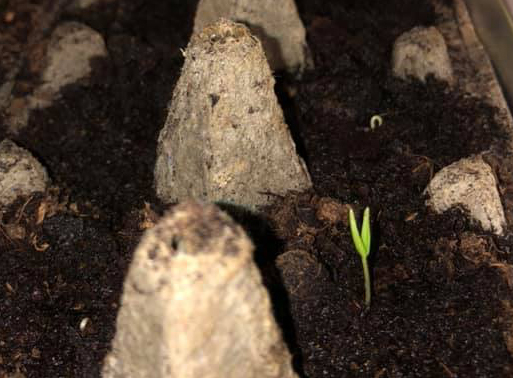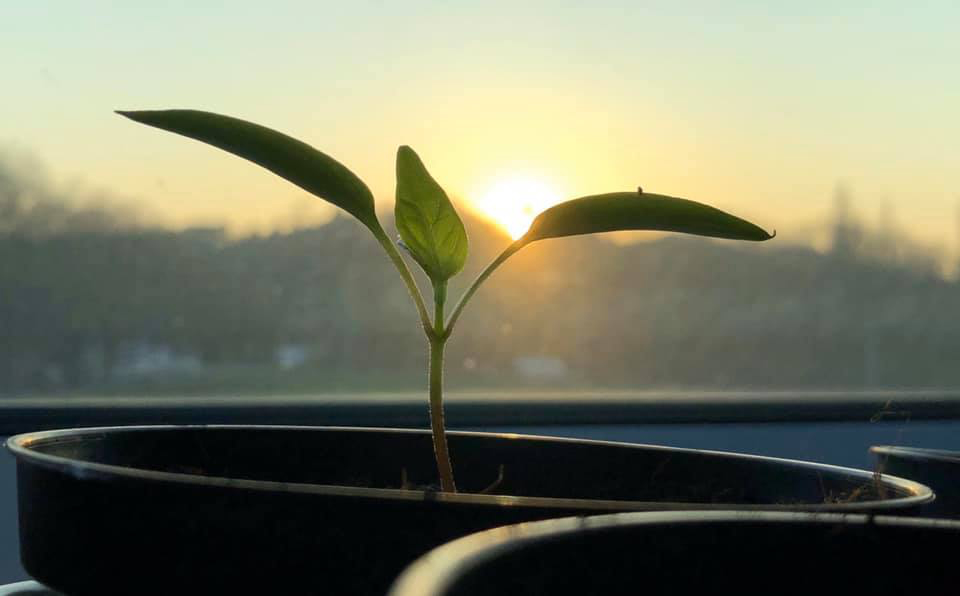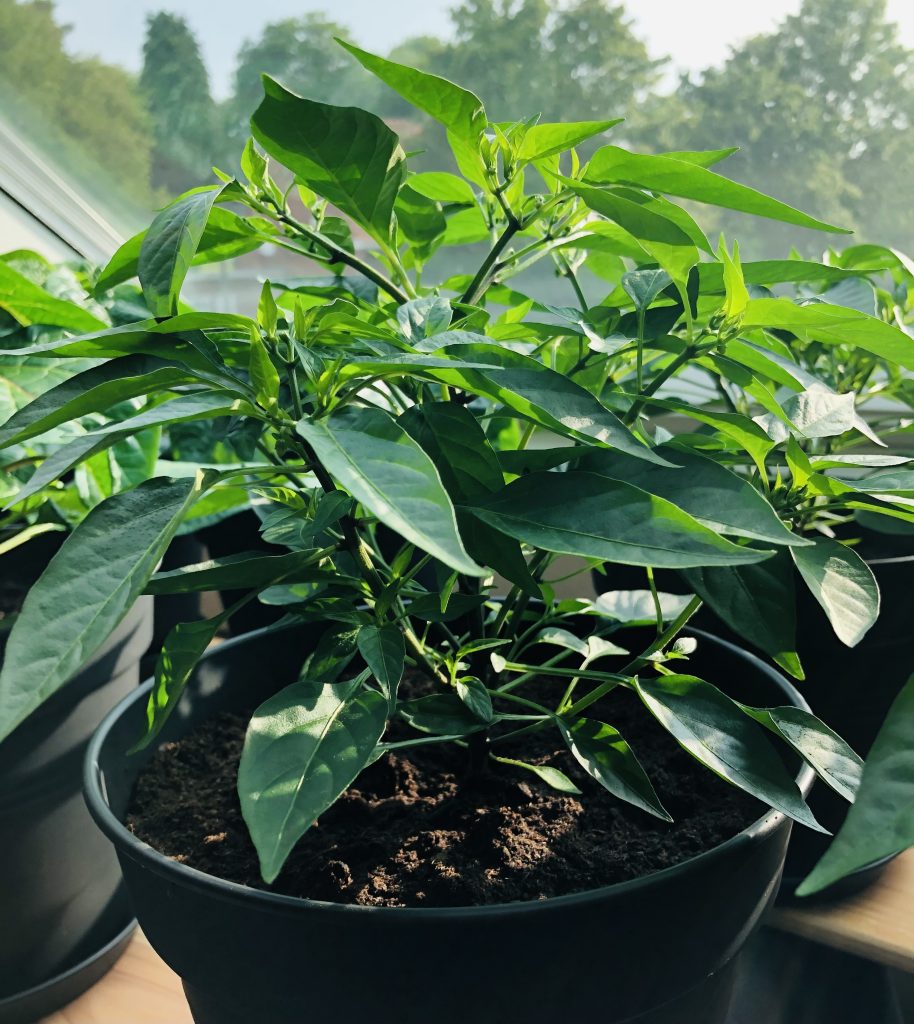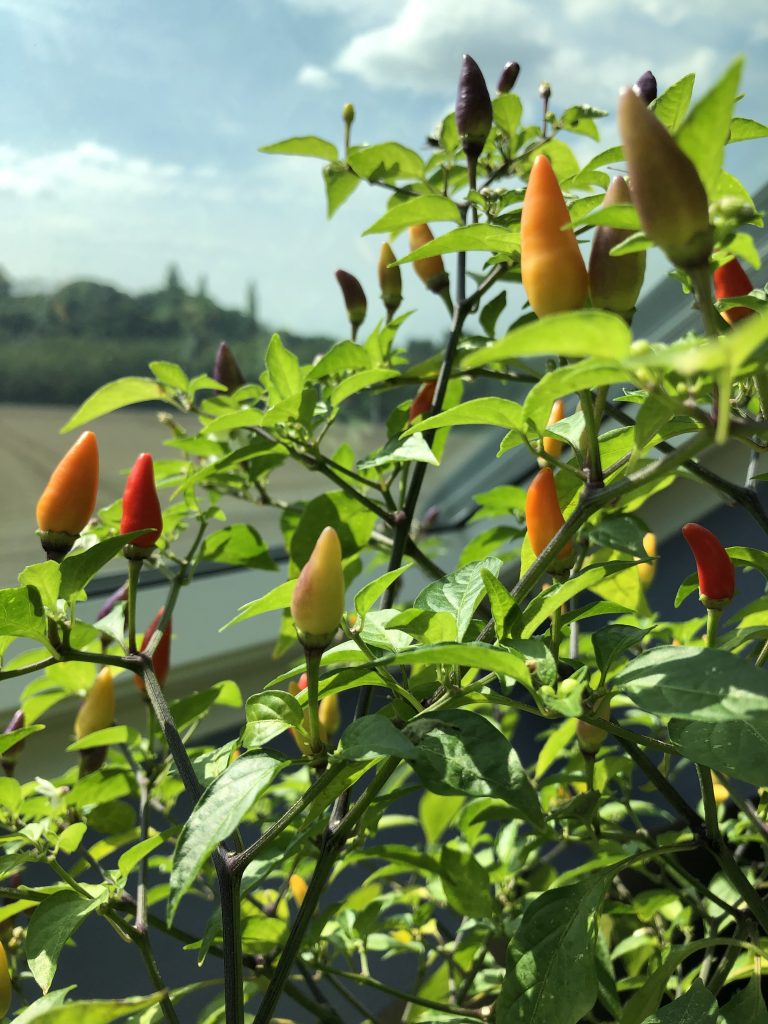Chili peppers are very much fun to cook with, but unfortunately not always so easy to be found, especially in a country like Belgium. While most supermarkets have some of the milder species in their standard offering, the real stuff is not so commonly found. Some international supermarkets and grocery stores sometimes have a limited range of spicier peppers available, such as my personal favourite the habanero.
Nevertheless, it is always fun to experiment with other species and their peculiar flavours. Therefore I try to grow a few different types of chili peppers every year to discover new flavours. While this might look cumbersome to some people, it is in fact very easy to grow your own chili peppers. It is a common misconception that chili peppers would require a very warm climate, as they typically originate from hotter regions in the world than Belgium or Western Europe. Chili peppers can be cultivated both outdoors and indoors or in your greenhouse. Personally, I always grow my peppers indoors, below my rooftop windows, which works out surprisingly well.
The season is usually started off at the end of winter, in late February or early March. I usually already make my selection for the season during the Christmas holidays and order my seeds online. There’s plenty of websites offering chili pepper seeds, but my personal favourite so far is PepperSeeds.eu.
When it comes to starting plants from seeds, different people tend to have different preferences. I’ve tried starting seeds directly in soil and on wet paper towels, which both work out fine. The success rate of starting in soil for me has always been above 80% and for most chili pepper species even well above 90%, which is a bit better what I’ve observed on paper towels. Typically I put the seeds about 1 centimeter below the surface in fairly loose and humid soil. In order to speed up the hatching process, I typically place the pots on a small tray on top of a radiator but below the windowsill. As such, the seeds are in a warm, moist and dark environment, ideal to get them going.

The chili pepper seeds will typically take from a few days up to several weeks to hatch and make their way above the soil. In general terms, one could say that milder chili peppers are often faster to germinate than their spicier counterparts. I’ve seen Serrano peppers (~20.000 SHU) make it in just 3 to 7 days, Habanero peppers (~300.000 SHU) in about 10 to 21 days and Carolina Reaper peppers (~1.200.000 SHU) in 4 to 8 weeks, while all were started simultaneously and in the same conditions. The only important thing to do is to make sure that the soil remains moist and be patient, let nature work its magic.
About one or two weeks after germination, the seedlings should have a sufficient amount of roots to pot them up. From that moment onwards, your chili peppers love sunbathing and require sufficient but not excessive watering. In general, chili peppers are relatively fast growing and they do not require any additional nutrition.

After a few weeks when multiple sets of leaves have formed, it can be wise to consider topping your plants in order to make them more bushy. In general, this will definitely increase the number of flowering sites that will develop, and hence it is likely to increase the yield of the plant. Note that topping will also stress your plant to some extent, so it should only be done with sufficient time in between subsequent cycles, while not waiting until the blooming cycle has been initiated. Do note that by doing (multiple) cycles of topping, the blooming process is delayed and hence the overall time to harvest is prolonged.

Obviously, the time at which chili peppers start to bloom differs between different species, and in general it will also take longer for spicier varieties to start blooming compared to less spicy ones. Typical times to start blooming will range from about 6 to 12 weeks. Note that chili pepper plants are both male and female and that they are self-pollinating. This implies that there is no need to aid in the pollination process when having your plants indoors, although it can help to increase the harvest and decrease the number of flowers that prematurely get lost.
The nicest phase of all follows briefly afterwards, once the fruits have formed and start ripening. Most chili peppers will start off in green and then ripen to their final colour that is specific to each different variety. For many peppers this means red, but there’s also varieties that are yellow, orange or even brown or caramel. Next to that, there are varieties that start off in other colours, such as black or purple, to then ripen into red later on. Some chili peppers even go through many different colours while ripening, such as the conveniently named Chinese 5 colour chili peppers or the Numex Twilight pepper from the same family.

